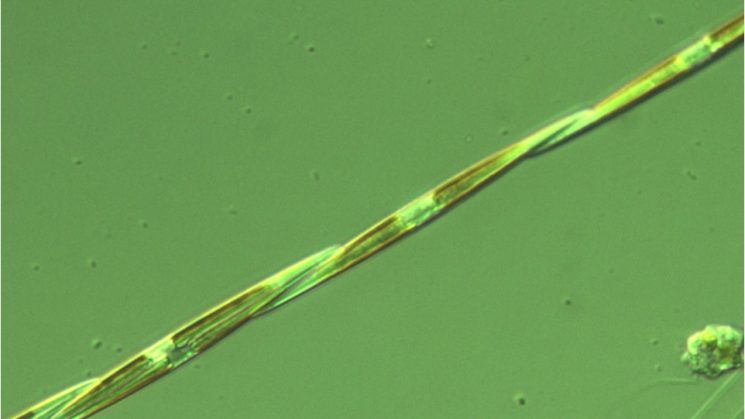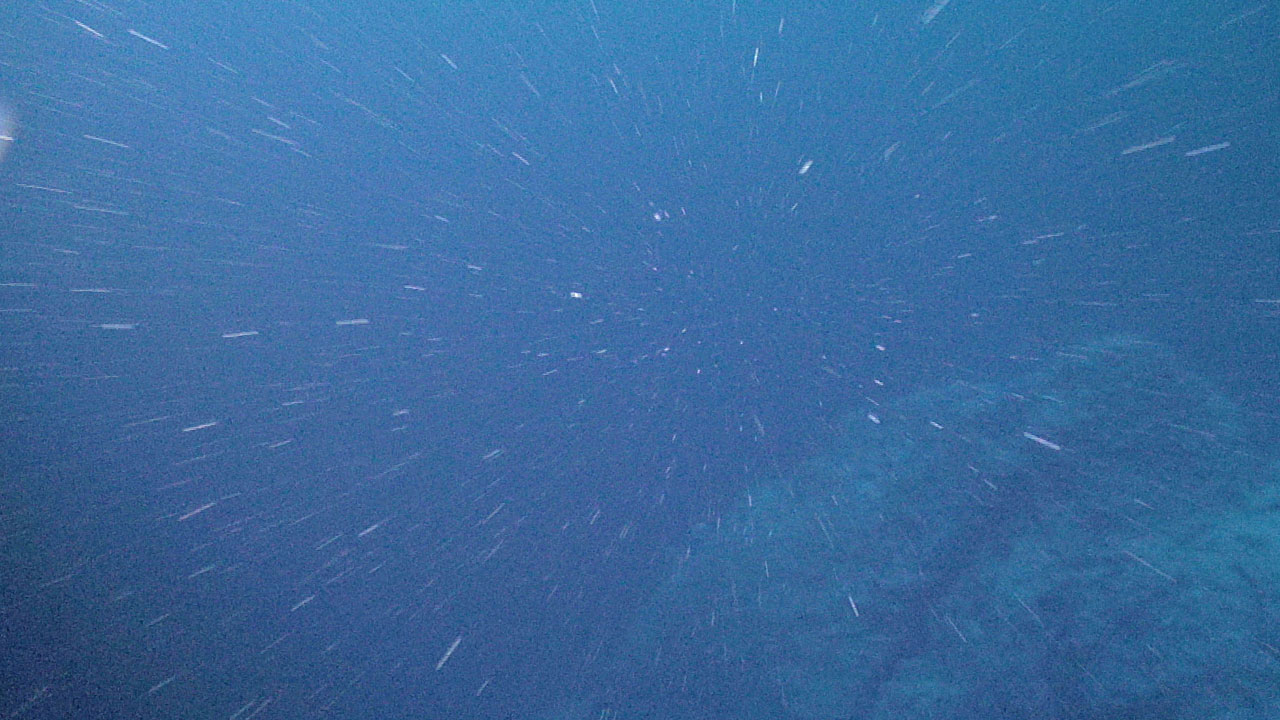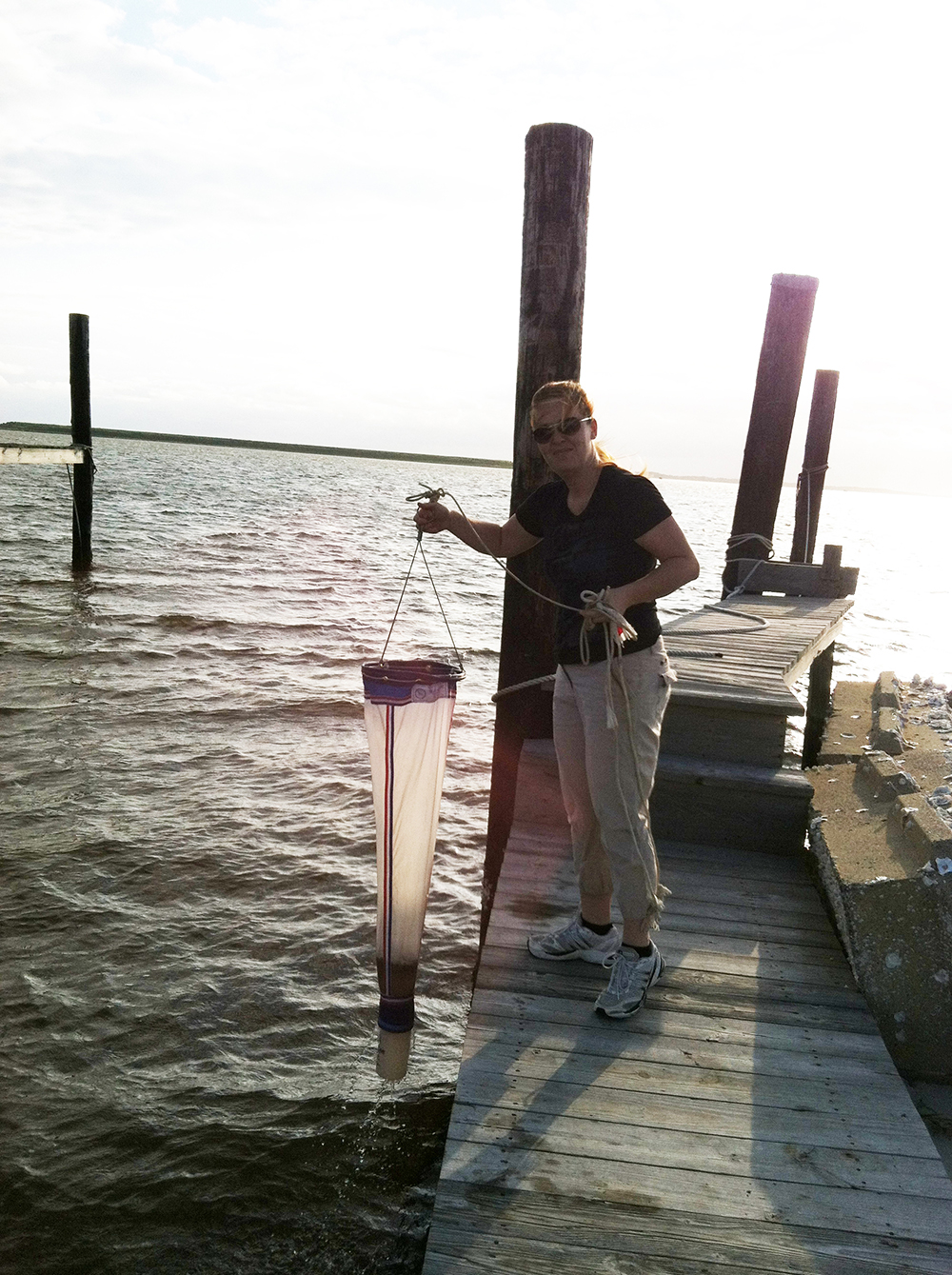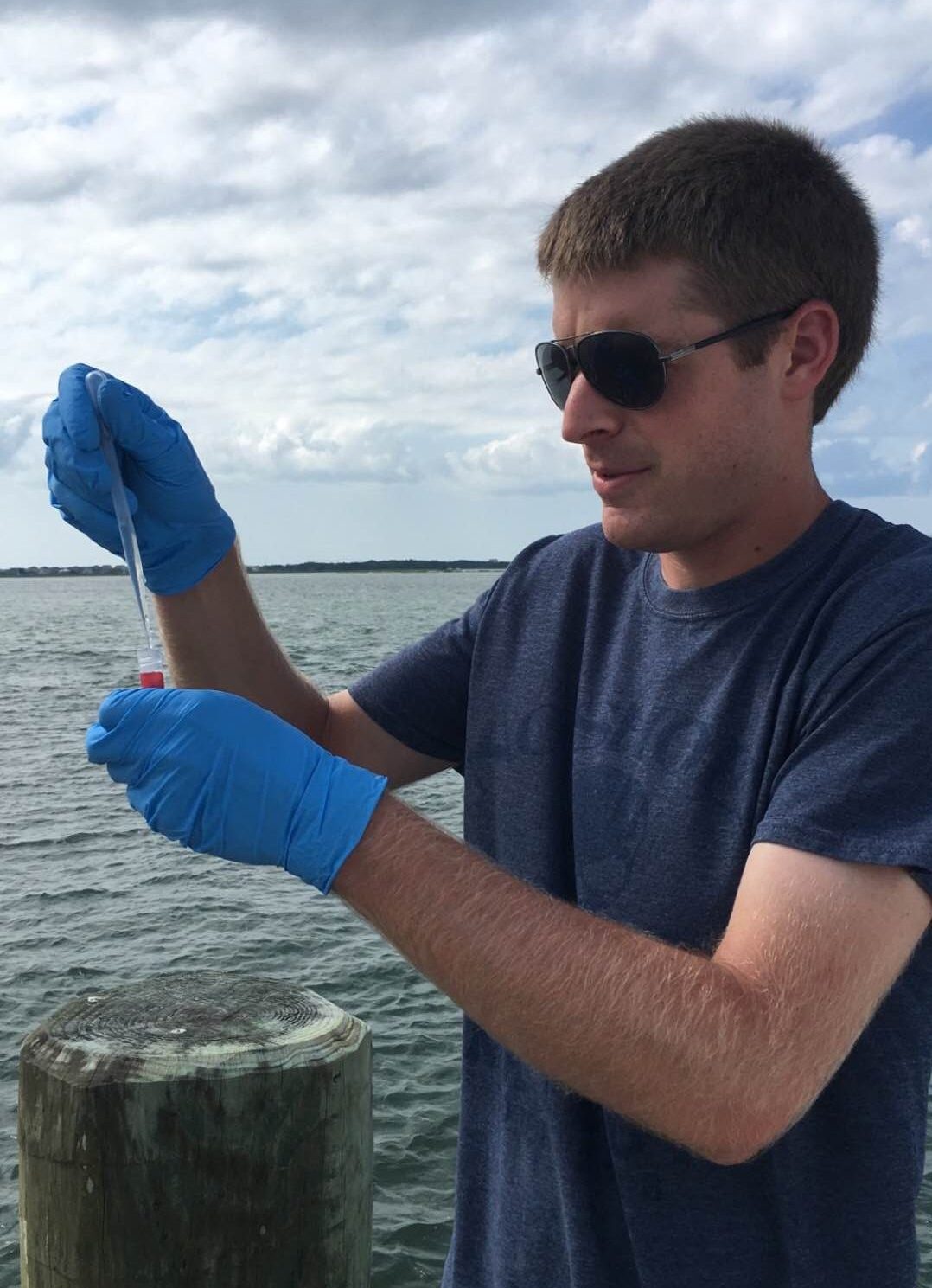
The algae Pseudo-nitzschia lives in coastal waters worldwide. Photo courtesy Astrid Schnetzer.
Under the right conditions, ordinarily diminutive algae can form a slimy blanket over large swaths of coastal water and cost communities millions of dollars. These harmful algal blooms are increasing in frequency and magnitude all over the world, largely due to nutrient pollution.
Too much algae can disrupt food webs, lead to low oxygen conditions and fish kills, and, if the bloom-forming species is toxic, result in food-web contamination. Algae serve as a food source for a variety of marine organisms, and food-web transfer of the toxin regularly affects sea birds and marine mammals.
Consuming toxin-laden shellfish or fish also can cause diseases in humans like amnesic shellfish poisoning. The algae known to cause amnesic shellfish poisoning, Pseudo-nitzschia, is found ubiquitously in our oceans.

Marine snow can fall at a rate of more than 100 meters per day according to new research out of North Carolina State University. Click on the photo above to see a short video featuring marine snow, courtesy of the National Oceanic and Atmospheric Administration National Ocean Service.
Amnesic shellfish poisoning is best documented off the West Coast where one of the largest and most toxic events on record happened in 2015. Scientists know from deep-water particle collection that benthic organisms living several hundreds of meters below the blooms on the seafloor can also become toxic but we weren’t quite sure of the mechanisms involved.
In our recent study, published in the journal Harmful Algae, we simulated how toxin dynamics change as Pseudo-nitzschia form aggregates, known as marine snow, and sink to the bottom. The clumping and sinking of cells is typically observed when the algae run out of nutrients and the bloom starts to “die off.” This study was the first to document how toxins, specifically domoic acid, are produced throughout marine-snow formation and how long the toxin persists in the environment.
Measuring over time in a laboratory simulation, we found the dissolved toxins in marine snow exceed the amounts inside the original algal cells by several orders of magnitude. This accumulation makes a potentially “toxic environment” for organisms associated with marine snow as it falls, and for the animals at the seafloor that ingest it.

Astrid Schnetzer tows a net to sample plankton at the North Carolina coast. Courtesy Astrid Schnetzer.
The study was partially funded by the National Science Foundation and North Carolina Sea Grant. Christopher Osburn of North Carolina State University, Robert Lampe of NC State and the University of North Carolina at Chapel Hill, Adrian Marchetti of UNC-Chapel Hill, Claudia Benitez-Nelson of the University of South Carolina, and Avery Tatters of the University of Southern California Los Angeles contributed to this research.
Our ongoing Sea Grant-supported studies of plankton dynamics in Bogue Sound, near Morehead City, also confirmed that Pseudo-nitzschia is common in North Carolina’s coastal waters. This finding prompted year-round sampling for domoic acid. So far, we have detected domoic acid in a few samples at concentrations much lower than those typical for the California coast.
We intend to establish a baseline on Pseudo-nitzschia abundance and/or toxicity within North Carolina waters to identify trends and the emergence of potential risks for human exposure. Several undergraduate students continue to contribute to our time-series research, gaining hands-on experience in the field and the lab.

Dan Wiltsie, a North Carolina State University master’s student, samples water in Bogue Sound for domoic acid. Courtesy Astrid Schnetzer.
Recently, our study also expanded to study cyanobacteria — or blue-green algae — blooms in the Cape Fear River. This project is a collaboration with Hans Paerl and Nathan Hall of the University of North Carolina at Chapel Hill’s Institute of Marine Sciences, Scott Ensign from AquaCo, and local water treatment plants.
In addition, my lab received a Sea Grant minigrant in August 2016 to test for cyanobacterial toxins in the Chowan River system where scum-forming blooms continue to make headlines. So, please stay tuned.
Astrid Schnetzer is an associate professor of the Department of Marine, Earth and Atmospheric Sciences at North Carolina State University. Her research group addresses how natural and anthropogenic processes shape plankton assemblages and how those changes impact ecosystem function and stability in a variety of aquatic environments.